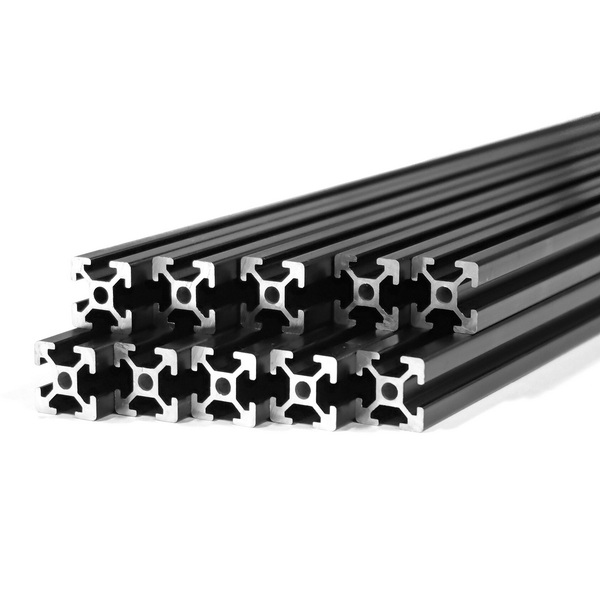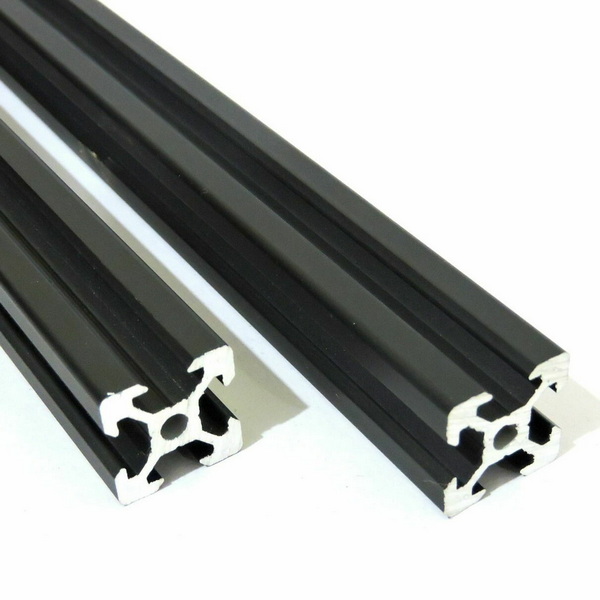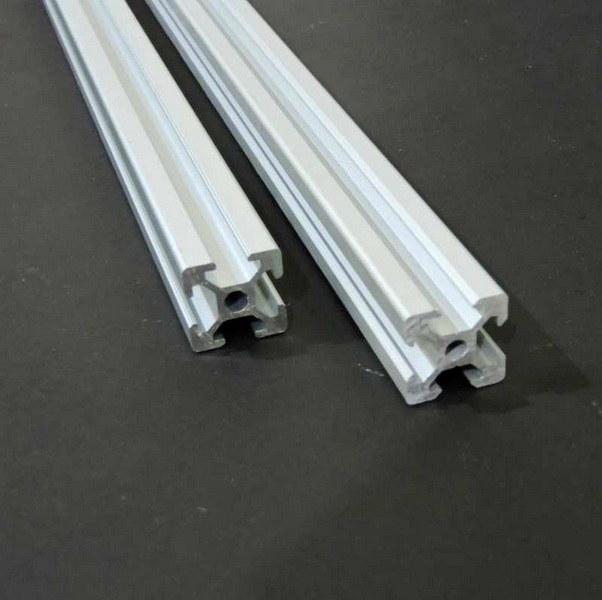Content Menu
● Understanding Aluminum Extrusions
● The 20x20mm Profile
● Comparison with Other Sizes
>> Strength and Load-Bearing Capacity
>> Weight Considerations
>> Versatility and Application
>> Cost Considerations
>> Aesthetic Appeal
>> Environmental Considerations
>> Conclusion
● Frequently Asked Questions
>> 1. What are the main advantages of using 20x20mm aluminum extrusions?
>> 2. Can 20x20mm aluminum extrusions be used for heavy-duty applications?
>> 3. What tools are needed to work with aluminum extrusions?
>> 4. Are 20x20mm aluminum extrusions compatible with other sizes?
>> 5. How do I determine the right size of aluminum extrusion for my project?
Aluminum extrusions are a popular choice in various industries due to their lightweight, strength, and versatility. Among the many sizes available, the 20x20mm aluminum extrusion profile stands out for its unique balance of structural integrity and adaptability. This article will explore how 20x20mm aluminum extrusions compare to other sizes, discussing their applications, advantages, and the contexts in which they excel.

Understanding Aluminum Extrusions
Aluminum extrusion is a process that involves forcing aluminum alloy through a die to create a specific cross-sectional shape. This method allows for the production of complex shapes that can be used in a wide range of applications, from construction to manufacturing. The extrusion process can produce profiles in various sizes, including the popular 20x20mm size.
The 20x20mm Profile
The 20x20mm aluminum extrusion profile is characterized by its square shape, with each side measuring 20mm. This profile is often used in modular construction, robotics, and DIY projects due to its ease of assembly and compatibility with various accessories. The profile typically features T-slots, which allow for the attachment of brackets, panels, and other components without the need for additional machining.
Comparison with Other Sizes
When comparing the 20x20mm aluminum extrusion to other sizes, several factors come into play, including strength, weight, and application suitability. Common sizes for comparison include 20x40mm, 30x30mm, and 40x40mm profiles.
Strength and Load-Bearing Capacity
One of the primary considerations when selecting an aluminum extrusion size is its strength and load-bearing capacity. The 20x20mm profile is suitable for lightweight applications, such as small frames, enclosures, and supports. However, for heavier loads or larger structures, profiles like 20x40mm or 40x40mm may be more appropriate due to their increased cross-sectional area, which provides greater strength and stability.
The load-bearing capacity of an aluminum extrusion is influenced by its geometry and the alloy used. For instance, a 20x40mm profile can support significantly more weight than a 20x20mm profile due to its larger surface area and structural design. This makes it ideal for applications that require robust support, such as industrial machinery or heavy-duty shelving systems.
Weight Considerations
Weight is another critical factor in the selection of aluminum extrusions. The 20x20mm profile is lightweight, making it ideal for applications where reducing weight is essential, such as in aerospace or automotive industries. In contrast, larger profiles like 30x30mm or 40x40mm, while stronger, also add more weight to the overall structure. This trade-off between weight and strength is crucial when designing projects that require both.
In applications where weight is a concern, such as portable equipment or structures that need to be moved frequently, the 20x20mm profile offers a significant advantage. Its lightweight nature allows for easier handling and transportation, making it a preferred choice for many engineers and designers.

Versatility and Application
The versatility of the 20x20mm aluminum extrusion makes it a favorite among DIY enthusiasts and professionals alike. Its T-slot design allows for easy assembly and disassembly, enabling users to create custom structures without specialized tools. This profile is commonly used in:
- 3D Printer Frames: The 20x20mm profile is often used in the construction of 3D printer frames due to its rigidity and ease of assembly. The ability to create a stable and precise frame is crucial for achieving high-quality prints.
- Robotics: Many robotic applications utilize the 20x20mm extrusion for building lightweight and strong frames. The modular nature of the profile allows for quick adjustments and modifications as designs evolve.
- Modular Workstations: The profile is ideal for creating adjustable workstations that can be easily modified as needs change. This flexibility is particularly valuable in dynamic work environments where tasks and equipment may vary.
In contrast, larger profiles like 40x40mm are often used in more permanent structures, such as industrial machinery frames or heavy-duty shelving systems. These larger profiles provide the necessary strength and stability for applications that demand durability and long-term performance.
Cost Considerations
Cost is always a factor in material selection. Generally, smaller profiles like 20x20mm are less expensive than larger profiles due to the reduced amount of material used. This makes them an attractive option for budget-conscious projects. However, it is essential to consider the long-term implications of using a smaller profile for applications that may require more strength or durability.
When planning a project, it is crucial to balance initial costs with potential future expenses. While a 20x20mm profile may save money upfront, it could lead to higher costs down the line if it fails to meet the structural requirements of the application. Therefore, careful consideration of the project's needs is essential when selecting the appropriate extrusion size.
Aesthetic Appeal
The aesthetic appeal of aluminum extrusions can also influence the choice of size. The 20x20mm profile offers a sleek, modern look that is often preferred in consumer-facing applications, such as furniture and display cases. Its clean lines and uniform appearance make it an attractive choice for designs that prioritize visual appeal.
In contrast, larger profiles may not provide the same visual appeal, especially in applications where appearance is crucial. For instance, in retail environments where products are displayed, the choice of aluminum extrusion can significantly impact the overall aesthetic of the space.
Environmental Considerations
In recent years, sustainability has become an increasingly important factor in material selection. Aluminum is a highly recyclable material, and using aluminum extrusions can contribute to a more sustainable design. The 20x20mm profile, like other aluminum extrusions, can be recycled at the end of its life cycle, reducing waste and environmental impact.
Moreover, the lightweight nature of aluminum extrusions can lead to lower energy consumption during transportation and installation. This aspect is particularly relevant in industries focused on reducing their carbon footprint and promoting environmentally friendly practices.
Conclusion
In summary, the 20x20mm aluminum extrusion profile is a versatile and practical choice for a wide range of applications. Its lightweight nature, ease of assembly, and compatibility with various accessories make it ideal for DIY projects, robotics, and modular construction. While it may not be suitable for heavy-duty applications compared to larger profiles, its advantages in cost, aesthetics, and versatility make it a popular choice among engineers and hobbyists alike.

Frequently Asked Questions
1. What are the main advantages of using 20x20mm aluminum extrusions?
The main advantages include lightweight construction, ease of assembly, versatility in applications, and cost-effectiveness.
2. Can 20x20mm aluminum extrusions be used for heavy-duty applications?
While they can support moderate loads, for heavy-duty applications, larger profiles like 20x40mm or 40x40mm are recommended.
3. What tools are needed to work with aluminum extrusions?
Basic tools include a saw for cutting, a drill for making holes, and T-nuts and bolts for assembly.
4. Are 20x20mm aluminum extrusions compatible with other sizes?
Yes, they can be used in conjunction with other sizes, allowing for flexible design options.
5. How do I determine the right size of aluminum extrusion for my project?
Consider the load requirements, weight constraints, and the intended application to choose the appropriate size.






















